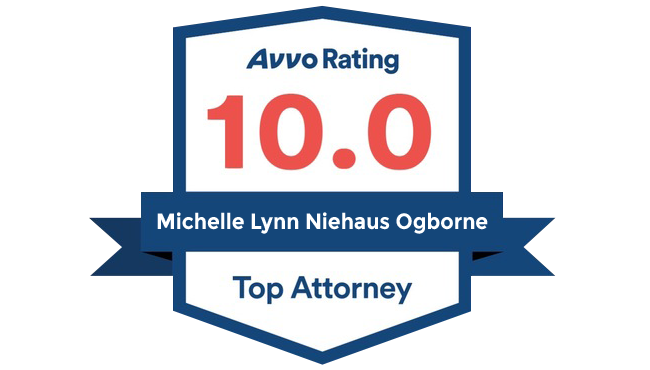How to File for Divorce in Arizona
Arizona is known as a no-fault divorce state. When either of you decides that you want to get divorced, neither party must place blame the other. The law only states you to declare that “the marriage is irretrievably broken.” Even though that sounds straightforward, it can be a complex process if you do not understand how to file for divorce in Arizona.
Note: To file for divorce in Arizona, at least one spouse is required to reside in Arizona for the minimum of the past ninety days.
Step 1: Hire an Attorney
The initial step in filing for divorce is to speak with an attorney. They will help explain to you how to file for divorce. Additionally, your attorney can address different options to help make the process simpler and to help you reach your goals.
The attorney you decide on depends on many considerations, including the kind of divorce you want. A collaborative divorce attorney will walk you throughout the process independent of a courtroom. In collaborative divorces, each spouse will have their own attorney, and they assist both of you to conceptualize solutions and find jointly agreeable results. If you both are willing to keep the attention on your family and the outcome, instead of fighting over every little thing, this may be a good alternative for you.
Step 2: File for Divorce
Either spouse may file for divorce. Whoever initiates is known as the “Petitioner.” The other is the “Respondent.”
After you’ve hired your attorney, they will create a Petition for Dissolution and through your consent, they will file it with the Clerk of the Court. This comprises of filing a:
- Summons: gives notice to the other spouse that the case has started and when/where they may take steps to progress
- Initial Injunction: stops both of you from making modifications to insurance, from taking specific actions with your property and/or accounts and from taking the children out of state while the divorce is unresolved
- Notice of Right to Transforms Health Insurance: offers information concerning one of the spouse’s health insurance rights and alternative to opt for COBRA
- Notice to Any Creditors – offers information concerning your credit rights and how a divorce may affect your debt
Each of the documents is a mandated part of the package. Speak with your attorney if you’re not sure of what the documents mean.
Step 3: Service and Waiting Period
Following you filing your documents with the court, the documents are required to be “served” to your spouse. In high conflict situations, this can be carried out by hiring a process server to server the papers to your spouse, however, in a low conflict situations, the spouse (or their attorney) can sign the document in the presence of a notary or a county court clerk, what is known as an Acceptance of Service that acknowledges they accepted the documents and avoids the requirement of hiring a process server. All in all, your attorney is going to take care of this. If you are unsure if your spouse has been served, speak with your attorney.
After your spouse has been served (via Acceptance of Service or through a process server), a sixty day mandated “cooling off” period starts. This allows you time to collaborate with your spouse and your group of collaborative divorce attorneys for agreement on terms. If you come to an agreement, you may present your Divorce Decree to be finalized as soon as “Day 61” prior to service.
Conversely, if you aren’t able to come to full agreements inside of that time frame, the process carries on. You can plan and take part in further collaborative divorce sessions. Each of your attorneys, communication specialists and financial 3rd party are all there to aid both of you to come to agreements so you may finalize the divorce.
If you decide on a standard courtroom divorce, a judge will schedule a sequence of hearings. Throughout those hearings, the judge will hear disputes, any evidence, and testimony and establish the result of your divorce based on their interpretation of state law and the details of your case.
Step 4: Decree of Dissolution
Whether you’re devising your own agreement throughout collaborative divorce sessions or a judge establishes your result, the last step of your divorce process is to obtain a Decree of Dissolution. This provides the legal structure for your divorce. It details how both of you will split assets, any debts, and property and how you are going to split parenting time and more. It will also describe any support responsibilities owed by one spouse to the other spouse.
Your Decree of Dissolution is a legally mandatory document. If you make errors throughout its creation, you could have a hard time changing the Decree at a later date. You should make sure every form is accurate, and every particular of what you want is specific. It’s wise to work alongside a knowledgeable attorney to be sure all of the details are fully contained in your divorce.
Advantages of Collaborative Divorce
There are various strategies to how to file for divorce. A collaborative divorce could help decrease some of the stresses from a conventional divorce. If you work with each other from the start, each of you will have more control over the final result. Collaborative divorce also provides you a way to plan alongside each other not only for the divorce itself but for life after it gets finalized.
Source:
-
Mary Ann HessMary Ann Hess started her legal career at a well-established firm that focused on highly complex family law cases. That early experience gave Mary Ann litigation skills involving complex issues related to all issues involving families. (480). (2019, October 25). How to file for divorce in Arizona. Retrieved October 28, 2020, from https://bestlegalchoices.com/how-to-file-for-divorce-in-arizona/
Choose the Right Divorce Lawyer in Arizona
Regardless of the choice you make, it’s important you make the best choice for you when hiring a divorce attorney. Remember: The decisions you make now can affect your future. Ultimately, choosing the best lawyer will depend on which lawyer feels best for you and your situation.
If you want to learn about Michelle N. Ogborne and see if she is the right attorney to represent you in your collaborative divorce in Arizona, contact us today!
Engaging with an attorney to protect your family is never an easy step. Whether you need to protect your family from the unthinkable or restructure your family through collaborative divorce, we’re here to help. When you’re ready to schedule a consultation with Michelle Ogborne, please visit the scheduling page to get started.







